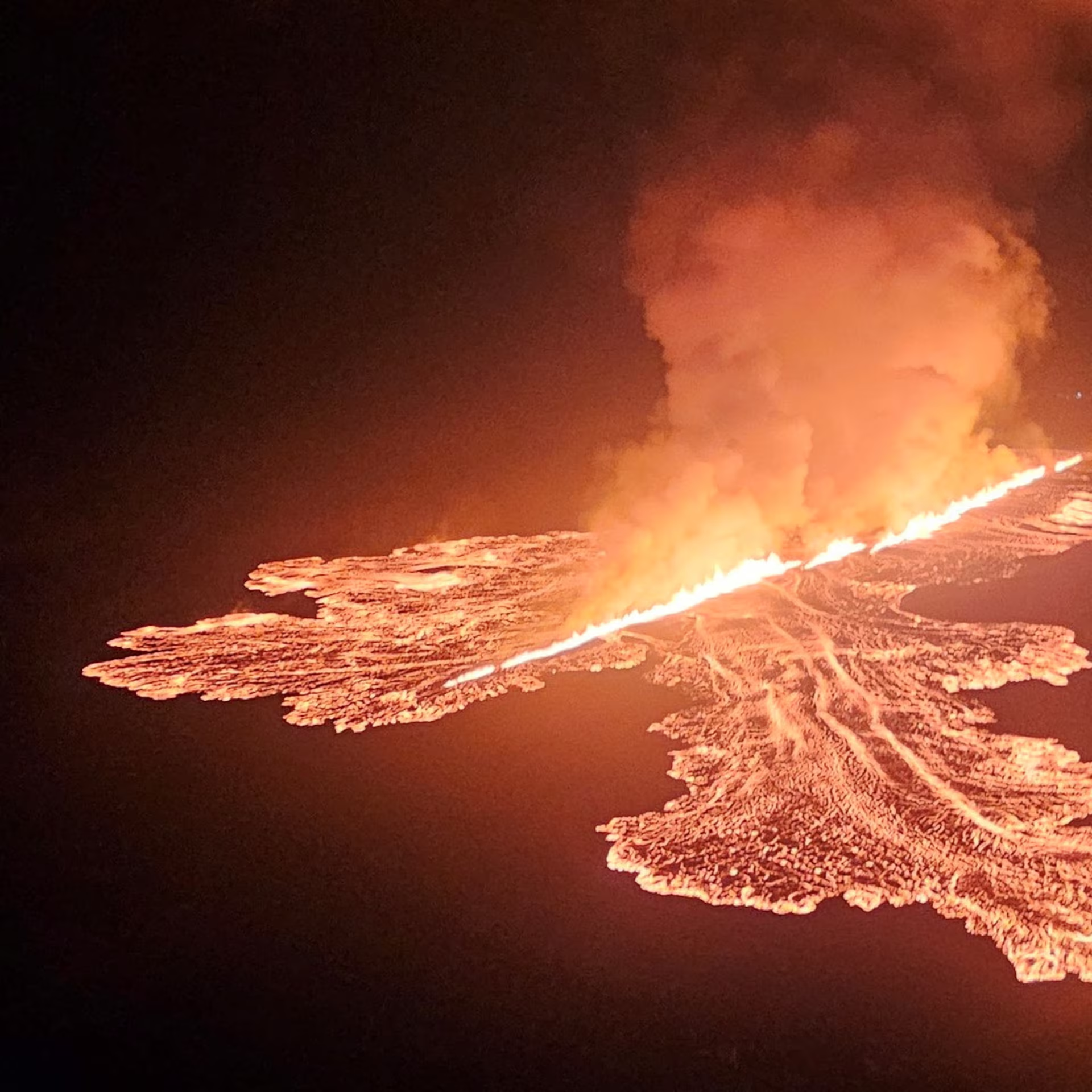Iceland (TDI): On Tuesday, a volcano erupted in southwest Iceland, marking the latest outbreak near the capital in recent years, leading to evacuation of tourists and residents.
Since morning, the volcano had been spewing lava in a fiery display of orange and red, creating a huge crack in the ground that later grew to 1.2 km (0.75 miles) long. It has also been reported that multiple earthquakes occurred in the volcanic area throughout the day.
The Reykjanes eruptions have neither posed a threat to the capital, Reykjavik, nor have they caused significant dispersals of ash into the stratosphere, keeping air traffic intact.
According to local media, the fishing town of Grindavik and the famous Blue Lagoon spa are close to the volcanic eruption, and a small number of people refused to evacuate.
The Icelandic Meteorological Office (IMO) said that the protective barriers around Grindavik have been breached, as a new eruptive fissure opened a few hundred meters inside.
Read More: Wildfires Break Out Across East London, Cause Yet Known
The President of Grindavik town council, Kristinsdottir, said that it was “extremely difficult” to see this activity inside the town’s safety barriers.
The region’s police commissioner, Ulfar Ludviksson, told media that people have been advised to leave the danger zone, but some people in around seven to eight houses are still staying.
There were fears that the town was “in danger of having lava flows entering the inhabited area,” said Rikke Pedersen from the Nordic Volcanological Centre.
The IMO also reported that a hot water pipe has broken in the northern part of Grindavik, which confirms that considerable cracking has occurred within the town.
Read More: Deadly Heatwave Sweeps Europe, Kills 8
Based on current wind direction, gas pollution from the eruption will travel northeast towards the capital area, the IMO added.
The length of the magma that formed on Tuesday under the crater series stretched to about 11 km (6.8 miles) – the longest that has been measured since 11 November 2023, meteorologists said. The magma corridor extends about 3km further northeast than seen in previous eruptions.
Iceland has 33 active volcano systems and sits over what is known as the Mid-Atlantic Ridge, the boundary between two of the largest tectonic plates on the planet.
An IR student whose interest lies in diplomacy and current affairs and a part time debater




